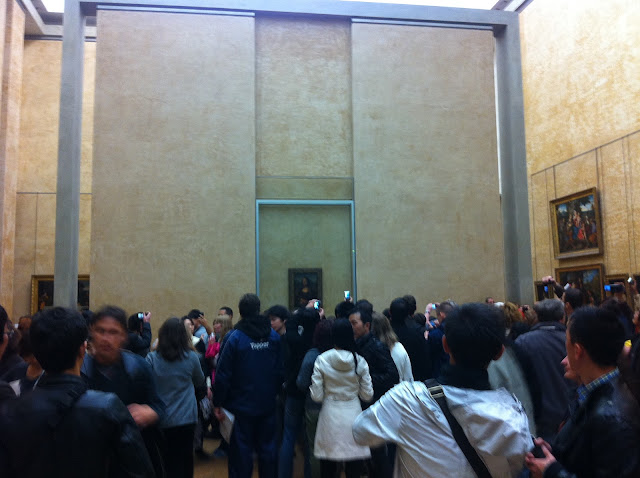Wednesday, March 23, 2011 -  1970 Convention,Interpol,Mexico,UNESCO
1970 Convention,Interpol,Mexico,UNESCO
 No comments
No comments
 1970 Convention,Interpol,Mexico,UNESCO
1970 Convention,Interpol,Mexico,UNESCO
 No comments
No comments
UNESCO 1970 Convention Today: Last week's conference
 |
| Dr. Jorge Sánchez-Cordero speaking at the public debate. |
Home from Paris, I will continue coverage of the UNESCO meeting on the commemoration of the 40th anniversary of the 1970 Convention, the still to be ratified by one-third of the signatories of an international effort to stop the illicit trafficking of cultural property, as does the looting of archaeological sites all over the world.
The 1970 Convention, formerly known as the Convention on the Means of Prohibiting and Preventing the Illicit Import, Export and Transfer of Ownership of Cultural Property 1970, can be read here on UNESCO's website.
On March 15, in one of the auditoriums at the UNESCO building in the 7th arrondissement of Paris just a few minutes walk from Napoleon's Tomb, the meeting, "The 1970 Convention: Past and Future", began with a public debate moderated by journalist Louis Laforge. The speakers included Irina Bokova, Director-General, UNESCO; Bernd Rossbach, Director, Specialized Crimes and Analysis, INTERPOL; Dr. Jorge A. Sánchez Cordero, Director of the Mexican Center of Uniform Law; Stéphane Martin, President, Musée du Quai Branly; and Jane Levine, Worldwide Compliance Director and Senior Vice President, Sotheby's Auction House.
One of the scheduled speakers, Dr. Zahi Hawass, Egyptian's brief former Minister of Culture, was 'unable to leave Cairo' to attend the meeting. Instead, he sent a message that said he supported the fight against the illicit theft of cultural property and asked that people help Egypt find the items recently stolen from the Cairo museum.
"The art market is sometimes painted as the enemy," Jane Levine, a former American prosecutor said, after UNESCO's introductor remarks. Her job at Sotheby's, she said, is to train staff on how to ask questions about the provenance of objects. She works with a full-time department of lawyers and admits that her appointment is a change in the market's "new attitude" of focusing on the due diligence aspect of archaeological objects.
Mr. Rossbach told the audience that INTERPOL is a "crucial partner with UNESCO" in fighting the illicit trafficking in art and cultural objects. INTERPOL seeks the cooperation of specialized organizations like UNESCO and stressed the importance of training. INTERPOL released a summary of his statements on the group's website here.
Mr. Sanchez-Cordero said in Spanish, according to UNESCO's English translator, that the 1970 Convention 'has to play a prominent role in the new cultural order'. He said that the convention 'only protects objects placed on an inventory list, a problem in implementing the 'effectiveness' of tackling this problem and one that 'runs counter to archaeological sites and is a problem for countries of origin.' Another shortfall, he said, was that it was just not enough to adopt the international convention. "We shouldn't stop at that but follow-up and give countries of origin (of cultural objects) a system to follow up the convention and to take remedial action.'
Mr. Martin said in French, and I also paraphrase him through UNESCO's English translator, that French museums will not complete collections with objects that unlawfully entered the market. 'Most objects in museums haven't been created to be in a museum,' he said, 'so the wish to place them there doesn't fit in with all cultures, such as placing a religious object outside of a church. What is La Jaconde? Is it an Italian object because Leonardo da Vinci painted it? Or French because François I purchased it? Or is it Japanese because it's viewed by the Japanese?' It's a fascinating and complex issue. Everyone rejects a nationalistic view of the world. It's a cultural issue for everyone and counter to trade.'
UNESCO's Director-General, Madame Irina Bokova, said that she wanted to "ring the bell of the alarm" and find out how to "strengthen and implement" the 1970 Convention, mentioning that there was a "new conscience" in the past 40 years that supports cultural exchange, diversity, knowledge and art, but is against the "pillaging" of archaeological sites, the trafficking of illicit cultural objects which is "robbing" people of their identity, rights, and destroying archaeological sites and excavations. She commended the countries of Belgium, The Netherlands, and Switzerland who recently signed the convention. "Without international cooperation, it would be difficult to curb this trade."
Mr. Laforge asked INTERPOL's Rossbach if there are any major routes for illegal trafficking of cultural objects. "There is always a reaction and an action," Rossback said. "We cannot be fixed on one route. We are working with partners to identify those gaps."
Interpol has opened a new office in Singapore, Laforge asked as translated from French to English, is this indicative of a new market? "Yes," Rossbach answered. "Singapore is a sign."
According to UNESCO:
"The illicit trafficking of antiquities is estimated to be superior to US $6 billion per year, according to research conducted by the United Kingdom's House of Commons on July 2002. Ten years later, the UN report on transnational crimes calculated that the world traffic in cocaine reached US $72 billion; arms, $52b; heroine, $33b; counterfeiting, $9.8B; and cybercrime, $1,253B. Together with the trafficking in drugs and arms, the black market of antiquities and culture constitutes one of the most persistent illegal trades in the world."We'll continue coverage of this UNESCO 1970 Convention meeting tomorrow.









